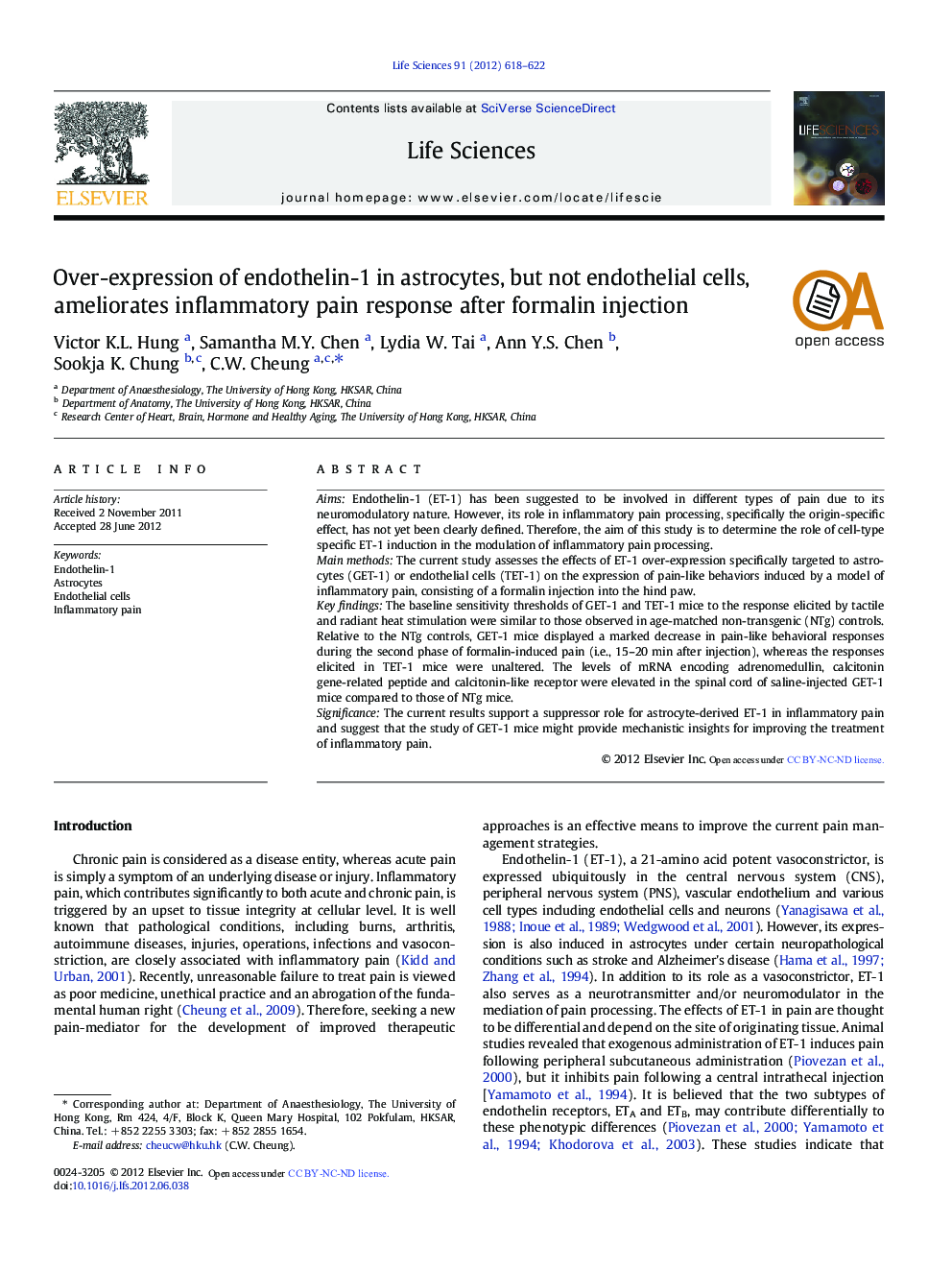| Article ID | Journal | Published Year | Pages | File Type |
|---|---|---|---|---|
| 5842462 | Life Sciences | 2012 | 5 Pages |
AimsEndothelin-1 (ET-1) has been suggested to be involved in different types of pain due to its neuromodulatory nature. However, its role in inflammatory pain processing, specifically the origin-specific effect, has not yet been clearly defined. Therefore, the aim of this study is to determine the role of cell-type specific ET-1 induction in the modulation of inflammatory pain processing.Main methodsThe current study assesses the effects of ET-1 over-expression specifically targeted to astrocytes (GET-1) or endothelial cells (TET-1) on the expression of pain-like behaviors induced by a model of inflammatory pain, consisting of a formalin injection into the hind paw.Key findingsThe baseline sensitivity thresholds of GET-1 and TET-1 mice to the response elicited by tactile and radiant heat stimulation were similar to those observed in age-matched non-transgenic (NTg) controls. Relative to the NTg controls, GET-1 mice displayed a marked decrease in pain-like behavioral responses during the second phase of formalin-induced pain (i.e., 15-20Â min after injection), whereas the responses elicited in TET-1 mice were unaltered. The levels of mRNA encoding adrenomedullin, calcitonin gene-related peptide and calcitonin-like receptor were elevated in the spinal cord of saline-injected GET-1 mice compared to those of NTg mice.SignificanceThe current results support a suppressor role for astrocyte-derived ET-1 in inflammatory pain and suggest that the study of GET-1 mice might provide mechanistic insights for improving the treatment of inflammatory pain.
